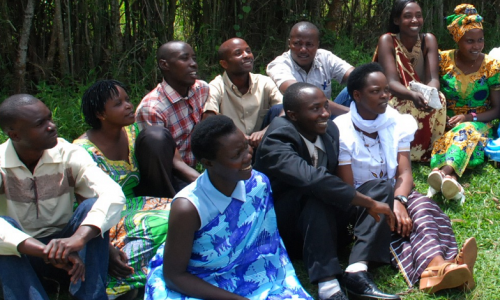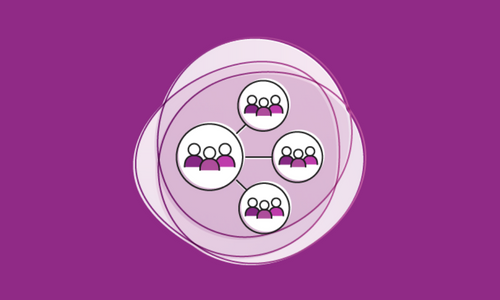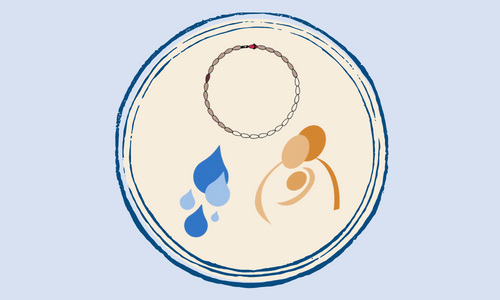7 Dos and Don’ts for Sustainability in Innovation
[Originally posted on UN Foundation’s Global Accelerator for Entrepreneurs & Innovators Everywhere blog here]
It seems like you can’t get very far into any conversation these days without someone asking: “How are you going to be sustainable?” Admittedly, it’s not my favorite question—not because it isn’t absolutely critical (it is), but because the question is so complex to define, let alone answer. Talking about sustainability often creates more questions than answers: What do we mean by sustainability? How do we know when we get there? Is there really even a permeant “there” to get to?
My colleagues and I at the Institute for Reproductive Health (IRH) at Georgetown University, think about these questions often. Our mHealth solution, CycleTel™ (irh.org/cycletel), which seeks to provide a family planning method directly to women in India through mobile phones, has reached an exciting growth stage. We’ve finished pilot testing of our technology to determine acceptability and feasibility, and are now trying to figure out how to scale and sustain our entire model surrounding our service.
Sustainability is something we have been planning for from the beginning. Along the way, we have uncovered some lessons for market-based mHealth innovations and we hope you can learn from our wins and avoid our hiccups through this list of dos and don’ts:
1. DO remember that sustainability is about more than about financials.
Financial sustainability (though important) is only one piece of the puzzle. For us, sustainability is about making sure our social impact can last in the long-term, which means monitoring durability on a number of levels:
- Organizational level: can our operations support us in the long run?
- Leadership level: do we have the right team and partner capacity in place?
- Technology level: can our platform stand up to changing technologies?
- Mission level: can we continue to create the social value we set out to accomplish?
2. DO start with a business model.
Yes, even nonprofits have business models. As defined in the “Business Model Canvas” tool, a business model describes “how an organization creates, delivers and captures value.” Begin mapping out the fundamental building blocks now and imagine how your model might look in five or 10 years and revisit regularly as you learn and grow. This process will help you address critical sustainability questions like who will be the eventual “payers” or “buyers” of your service. For example:
- Will a government take on costs if it supports better health outcomes?
- Will individuals pay if it meets market needs?
- Will a for-profit acquire the service if they see customer value?
Thinking through a business model will also help you articulate the value that you deliver to your customers.
3. DON’T forget to test your assumption.
During our initial research, more than 80 percent of focus group members said they would pay a fee to use CycleTel. That seemed like good early evidence and a strong base assumption, but because that finding would be so fundamental for our proposed model, we tested it again and asked users to actually pay. Only then did we consider that assumption validated (and luckily, users did pay). If your product launch or business plan relies heavily on an assumption, make sure that you test it thoroughly in market conditions. In the end this also helped us refine our price point, get a better sense of our target market, and ultimately have real evidence about CycleTel’s market potential for negotiating with mobile network partners.
4. DON’T expect anything for free just because you are “doing good.”
The mobile industry is and will continue to be driven by commercial interests. Many mobile network operators are embracing the evidence that providing essential services in health is not just a good thing to do, but can actually support their bottom line. But that doesn’t mean you should expect a free lunch. Come to the table with a strong value proposition about your mHealth service, and be smart about what you are asking. We’re in the process of negotiating a large partnership with a leading mobile player in India for CycleTel. We learned quickly it’s a process of give and take and finding the sweet spot of mutual value.
5. DO adapt to evolving markets and industry trends.
Entrepreneurs know that markets change quickly. Mobile products are heavily influenced by local regulations, policies, and commercial environments. Engaging those who know these aspects of the ecosystem in India helped us see which paths to pursue and which to avoid far more quickly than if we were looking at our service in isolation. Think about building local capabilities to help identify and respond to the changing environment so you aren’t derailed. For example, since we began working in India, the telecommunication’s VAS (value-added services) market has changed significantly from a commercial standpoint. It’s our job to react to the new rules of the game.
6. DON’T underestimate the cost of getting users onboard.
For disruptive innovations in developing countries, we’re not just creating a new product—we’re likely creating entirely new markets. Demand for and understanding of your service will likely be low at first (especially for a consumer push product, like family planning). Shaping markets and creating consumer demand is pricey. Remember to factor this into your financial modeling when trying to estimate costs. For example, though we conducted a cost analysis for CycleTel early on, we underestimated the resources it would take to get consumers used to new product benefits they’d never previously considered.
7. DO be realistic about your journey to financial sustainability.
It takes a lot of initial investment to get any startup off the ground. Generating income and/or moving away from 100 percent philanthropic funding is a huge feat. Most M4D (mobile for development) organizations that are mission-centric need some sort of ongoing subsidy, mixed income, or patient capital to get to a point where they’re seeing real financial sustainability. Set expectations early with investors and funders and come to a common understanding of what sustainability looks like for you. Ask yourself what trade-offs you are willing to make to get there—now and in the long-term.
For all innovators out there: You know that being experimental is risky; you win some and lose some. The real challenge is recognizing when and if your project should end. But whether it’s because you have done your job right – Hurray! We’re not needed anymore! Problem solved. Or because a fatal flaw requires you to rethink, know that the sustainability finish line may not be the right goal for all great ideas. Keeping this perspective can help us collectively move the “do’s” and “don’ts” dialogue forward, which is one thing that I think is well worth sustaining.
This blog is part of the Innovation Working Group Catalytic Grant series, highlighting the impact of mobile technology on global health and development. Learn more about the 26 mHealth projects funded under the IWG grant program here and through #IWGImpact.
 Where We Work
Where We Work  Press Room
Press Room  FACT Project
FACT Project  Passages Project
Passages Project  Learning Collaborative
Learning Collaborative  Search All Resources
Search All Resources  Social Norms
Social Norms  Fertility Awareness Methods
Fertility Awareness Methods